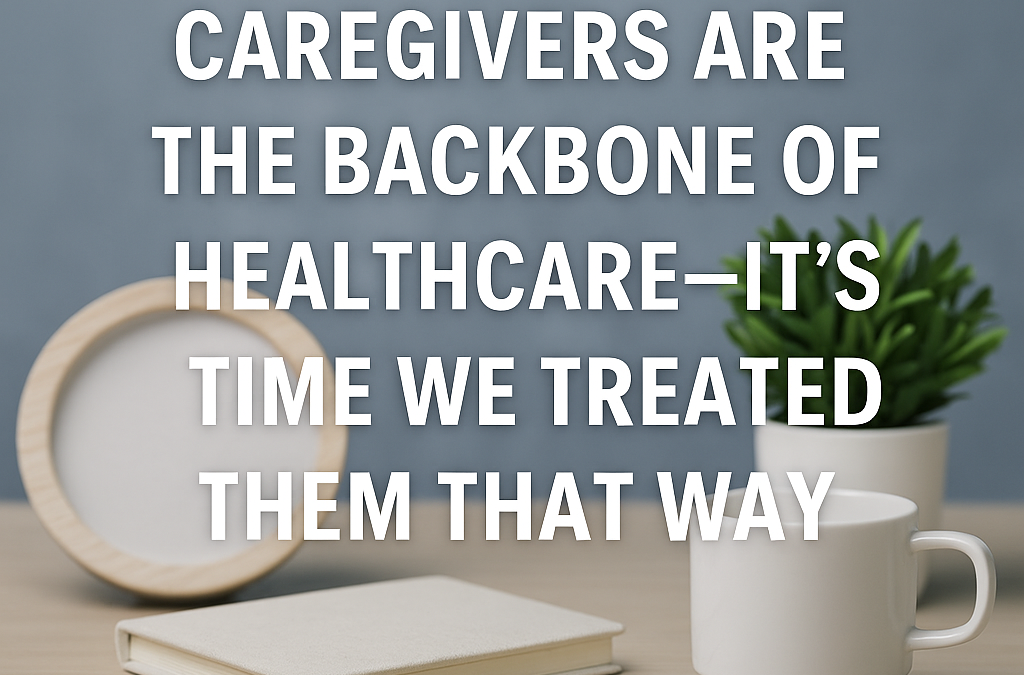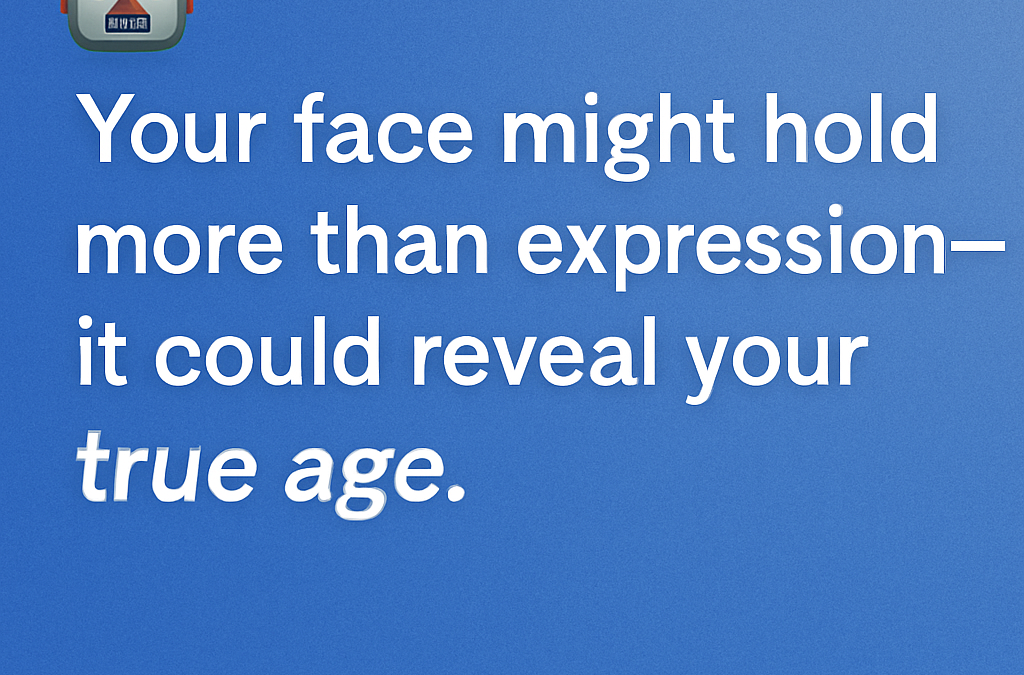
by hospicekeys | May 11, 2025 | Blog, Keys to Compassionate Care
When we talk about healthcare, we usually focus on doctors, nurses, agencies — more broadly, on healthcare providers and clinicians. But there’s another group quietly holding up the entire system — caregivers.
These are the family members, friends, and neighbors who step in when someone is seriously ill. Whether by choice or by necessity, caregivers act as the frontline providers, decision influencers, and logistical coordinators of care. They’re the ones managing medications, getting people to appointments, translating confusing medical language, and holding it all together emotionally and financially. Often, they do it without any formal training, without pay, and without much guidance. And yet, in many healthcare systems, their role is structurally invisible.
Caregiving is overwhelming. If a caregiver does not have a medical background, it’s like being dropped into a foreign country without a map or translator. The caregiver is expected to make critical decisions, understand complicated care plans, and advocate for their loved one, all while dealing with the typical stresses of day-to-day life and often completely exhausted.
It is time for the healthcare system to reframe how caregivers are viewed — not as adjuncts, but as integral components of the care team.
Caregivers Fill Gaps the System Can’t
Family caregivers routinely provide medication support, wound care, appointment coordination, emotional support, and even perform complex medical tasks — often with no formal training and limited guidance. In many ways, they serve as an unpaid workforce shouldering the burden of a fragmented system.
The cost? Burnout, lost income, worsened health, and poor outcomes for both patients and caregivers. When caregivers falter, the entire system feels the pressure.
Why Do We Care?
There are so many reasons why we need to support caregivers to ensure that they can continue to remain integral members of the healthcare team. But if forced to select some reasons, here are three:
- Continuity of Care
- Cost Reduction
- Equity and Access
Let’s expand on what we mean by these:
- Continuity of Care: Caregivers bridge the gap between clinical visits. Their knowledge of the patient’s day-to-day is a valuable asset. It’s critical that they are invited into the caregiving process and that they are treated as members of the healthcare team so that they can more effectively serve in this role
- Cost Reduction: Engaged and supported caregivers can reduce avoidable emergency room visits, rehospitalizations, and complications from nonadherence. This is better for the patient, better for the provider, and better for the system.
- Equity and Access: Caregiving responsibilities often fall on women and people of color, disproportionately impacting vulnerable communities. Inviting caregivers to be a part of the caregiving team, providing support to caregivers, and building an infrastructure to support caregivers is a matter of equity.
So How Can We Affect Change?
How can we move beyond lip service and do more to support caregivers? Here are some ways that providers have been and can continue to implement changes at the agency level, acknowledging the role of caregivers and adopting actionable strategies:
- Embed caregivers into care pathways. Some organizations are exploring disease-specific protocols that include caregiver training and touchpoints.
- Provide navigation support. For many caregivers, the hardest part is knowing where to start. Can your system offer a “front door”— a single point of contact — for guidance?
- Invest in training and tools. Caregivers shouldn’t have to rely on guesswork. Equip them with education, digital tools, and checklists that demystify care tasks.
- Support caregiver well-being. Create programs that address their emotional and financial toll—through respite care, coaching, or reimbursement models.
Empowering Caregivers: A Strategic Change
Recognizing and empowering caregivers isn’t just compassionate — it’s strategic. As we move toward value-based models and whole-person care, caregivers must be integrated into every phase of healthcare delivery. Leaders who fail to act risk burnout not just among caregivers — but across their entire workforce.

by hospicekeys | May 11, 2025 | Blog, Keys to Compassionate Care
Artificial intelligence (AI) continues to push into new corners of healthcare, offering tools that promise faster, smarter, and sometimes more equitable decisions. An emerging technology gaining attention is the use of AI to estimate a person’s biological age based on facial features.
But as with many AI-driven tools in medicine, the excitement that comes with the use of such a system that would provide us with an estimate of our biological age also comes with questions: How accurate is this system? Is it fair? And is it ready for real-world use?
What Is Biological Age—and Why Does It Matter?
Chronological age tells us how many years someone has lived. Biological age, on the other hand, refers to how old a person’s body seems based on signs of wear and tear. This difference matters—especially in clinical decisions where physical resilience is a factor.
Doctors already use a variety of measures to assess health status, particularly in older or seriously ill patients. Tools that can estimate biological age may add another layer of insight—especially when deciding on treatments that carry risks, such as surgery or chemotherapy.
The Rise of Facial Analysis in Medicine
Facial analysis systems that are being used to evaluate biological age work based on an analysis of facial images. These analyzed images are input to a model that estimates how “old” a person appears biologically. Early research suggests it may offer useful clinical data—and potentially do so without introducing significant racial or gender bias.
But that’s a cautious “may.” These technologies are still being studied and, like all AI systems, will need to prove itself in diverse real-world settings before it can be fully trusted or adopted.
A Tool—Not a Verdict
When used carefully, AI has the potential to support, not replace, medical decision-making. In this case, facial analysis could one day help doctors better understand which patients are more likely to benefit—or face harm—from certain treatments.
But as with any medical technology, context is everything. Biological age should never be the only factor guiding care, and the ethical risks of misusing this data are real.
The Importance of Responsible AI
Any tool that relies on facial recognition or predictive algorithms must be built and tested with attention to bias, consent, and transparency. History has shown that algorithms trained on skewed or incomplete data can lead to serious inequities in care.
While AI facial analysis systems may show encouraging signs, the future of these tools will depend on how carefully we scrutinize and regulate their development.
Final Thoughts
The growing role of AI in healthcare raises exciting possibilities, including more personalized and equitable treatment decisions. But innovation must come with caution. Facial analysis technologies that are used to estimate biological age are not a cure-all. They are a test of how well we can blend clinical insight, data science, and human judgment to improve care without compromising fairness.
In the end, it’s not about how a face looks—it’s about how we use the information behind it.
What are your thoughts on the use of AI to support clinical decision-making? How much do you trust Artificial Intelligence?

by hospicekeys | May 11, 2025 | Blog, Keys to Compassionate Care
When we talk about death in our culture, we often do so quietly, hesitantly, or not at all. But The Last Ecstatic Days, a deeply moving documentary by Ethan Sisser, invites us to do something radically different: to look death in the eye—with clarity, compassion, and even celebration.
Ethan was just 36 when he was diagnosed with terminal brain cancer. Instead of retreating in fear or isolation, he chose to open his final days to the world. Through livestreams, gentle rituals, and an extraordinary sense of awareness, Ethan allowed us to witness his journey—not just the physical decline, but also the emotional, spiritual, and human richness that filled his last chapter.
Ethan’s choice to engage with death so openly is deeply moving. His story reminds us that dying is not a medical event—it’s a human experience. And when we meet it with presence, intention, and care, death can hold just as much meaning as life.
In the film, we see Ethan surrounded by a circle of caregivers, friends, and loved ones. Music, nature, touch, silence—these are the tools that shaped his final days. There is no panic, no sterile distance. Just connection. Just being. Just breath.
Ethan’s message is clear: We don’t have to wait for the very end to begin living fully. And when death comes, it doesn’t have to be the enemy. It can be a passage filled with beauty, peace, and even joy.
The Last Ecstatic Days is both an affirmation and a challenge for those who work in hospice care. It affirms this sacred work — helping people die with dignity and without unnecessary suffering. It also poses a challenge to continue holding space — not just for physical comfort, but for meaning, love, and authentic presence.
Ethan’s death was not quiet. It was brave. It was awake. And in sharing it, he gave all of us a gift.
He forced us to confront death and talk talk about it. And how we talk about death — and how we live with it — shapes everything about how we live.
🕊️

by hospicekeys | Apr 6, 2025 | Blog, Keys to Compassionate Care
The Cost of Care: How Senior Living Is Reinventing Itself Under Wage Pressure
Rising wages, workforce shortages, and aging demographics are pushing the senior living industry toward a crossroads. Labor costs already make up over 60% of expenses—and state mandates like California’s $25/hr minimum wage for healthcare workers are setting a new baseline. Yet, forward-thinking operators aren’t just trimming costs—they’re transforming how care is delivered.
From AI-driven documentation and predictive analytics to flexible staffing models and tech-powered efficiency, senior living is stepping into its next era. Here’s how smart operators are not only surviving—but thriving.
Read Full Article
Read the full piece on what’s changing—and what it means for the future of care: https://tinyurl.com/39hmhsu6

by editor | Dec 10, 2024 | Clinical Compliance, Compliance and Regulatory - Directors, Human Resources, Keys to Compassionate Care, Regulatory Compliance
When an employee brings forward a compliance concern, they’re engaging in what the law defines as protected activity. This might involve reporting a potential violation of hospice regulations, concerns about Medicare fraud, or even raising issues about unsafe working conditions. These are rights guaranteed under various laws, like the False Claims Act, OSHA protections, and Title VII of the Civil Rights Act, which protect employees who speak up.
In responding to employee concerns, there is a fine line between addressing workplace concerns and crossing into retaliation territory. Retaliation isn’t always a blatant act of revenge. Sometimes, it’s more subtle, even subconscious. Sometimes management at the hospice agency may feel frustrated or betrayed by an employee’s complaint and – without realizing it – allow those feelings to influence their decisions. Maybe the employee was already struggling with performance, or maybe there were pre-existing tensions on the team. But when an adverse action—like firing, demotion, or cutting hours—happens shortly after a complaint, it’s easy for that decision to be seen as retaliatory, even if it wasn’t intended that way.
What is Retaliation?
To clarify what retaliation means, it’s any adverse action taken against an employee because they engaged in protected activity. Timing is a major red flag here. If an employee files a compliance report and is terminated shortly after, it raises questions. Even if you feel justified in your decision, the timing alone can look suspect to a court, regulatory agency, or even the employee’s peers.
What are the Consequences of Retaliation
And the consequences for retaliation? They’re not just legal—they’re also reputational. If a claim is brought against an agency, the agency could face:
- Reinstatement of the employee to their position, even if you’ve moved on.
- Back pay, damages, and legal fees, which can quickly add up.
- Regulatory scrutiny, which might open the door to deeper investigations into the agency’s practices.
- And, perhaps most damaging, the perception that we don’t care about compliance or employee rights. That’s not a message we can afford to send.
From the employee’s perspective, they have a number of options if they feel they’ve been retaliated against. They might file a complaint with OSHA, EEOC, or state regulators. They could seek legal action for wrongful termination or take their concerns to external auditors or even the media. Once that door is opened, the hospice agency loses control of the narrative.
How Can You Avoid Retaliatory Behavior?
So, what can you do to avoid even the appearance of retaliation? Here’s are some suggestions:
- Document everything: If there are performance concerns or other issues unrelated to the complaint, make sure there’s a clear, consistent record. This documentation can be your best defense.
- Separate decision-making: If you’re in the middle of handling a compliance complaint, let someone outside the situation—like your compliance officer or HR—review any proposed actions against the employee.
- Follow established protocols: Deviating from your normal policies, especially when dealing with someone who has raised a complaint, can make it look like you are targeting them.
- Train your leaders: Everyone in management needs to understand what retaliation looks like and how to avoid it.
Leadership sometimes expresses concerns about employees “stirring up trouble” or raising issues for self-protection. But the law doesn’t distinguish between “valid” and “troublesome” complaints. Protected activity is protected activity, full stop.
Take a step back. If you’re ever considering taking action against an employee who has engaged in protected activity, discuss it first with your HR or compliance team. Together, you can ensure the decision is based on legitimate, well-documented reasons and not influenced—even unconsciously—by the complaint itself.
At the end of the day, your goal is to serve patients and families with integrity and compassion. That means creating a culture where employees feel safe to speak up about compliance issues without fear of retaliation. Protecting that culture isn’t just about avoiding lawsuits—it’s about doing what’s right for your team, your agency, and the people you care for.

by editor | Dec 8, 2024 | Blog, Keys to Compassionate Care
Reopening of prior year CAP calculations is always difficult to manage and is one of the dreaded letters that you may receive any year. It’s difficult enough to manage CAP during a given CAP year, but you also need to efficiently estimate CAP for patients who move between hospice providers so that you can estimate your risk of CAP overage and associated estimated overpayments.
The OIG released an audit of CGS’ cap calculation process for the 805 hospices that operated in CGS’s jurisdiction. Of these, 61 had net cap overpayments totaling $9.1 million for cap year 2020.
As part of the audit, the OIG reviewed the templates used to calculate aggregate cap amounts and selected 45 hospices to determine whether CGS followed its processes and whether the calculations in the templates were accurate.
The audit identified that CGS accurately calculated the initial 2020 cap amounts for all 805 hospices and collected or attempted to collect the $9.1 million in cap overpayments in accordance with CMS requirements.
For the the 45 selected hospices, the audit revealed that CGS did not reopen and recalculate most hospice caps for prior cap years (i.e., 2017, 2018, and 2019) resulting in lost collections of overpayment for these prior years. (CAP calculations may be reopened for up to three years.)
As a result, the OIG recommended actions that would increase CGS’ compliance with the policy of reopening prior year CAP calculations.
Hospice agencies operating in the CGS jurisdiction should take note of the results of this audit as it will likely result in increased identification of CAP overpayment demands in upcoming years.
For Additional Information
Link to full OIG report: https://tinyurl.com/ym3vu3ez
Video: Hospice CAP and key indicators for hospice CAP risk






